Rules for locating an outlet for an air conditioner: choosing the optimal location for installation
Agree that a socket in general is not the most important decoration of a room, and therefore you should not focus on it and place it in a prominent place. Of course, the location of the outlet for the air conditioner does not greatly affect the overall interior of the room, but it should be carefully considered so as not to damage the wall in the future and not to use extension cords again.
We will tell you where to install air conditioning outlets. We will suggest the best and safest places to place a power point. The article also provides recommendations for masking sockets and cords from air conditioning equipment.
The content of the article:
- Features of air conditioner sockets
- Where is the best place to install the outlet?
- General rules when choosing a location for an outlet
- Connecting the air conditioner to the network
- How to hide a split system outlet?
- When can't an air conditioner be plugged into a power outlet?
- Conclusions and useful video on the topic
Features of air conditioner sockets
The installation of a conventional household air conditioner allows the use of standard power outlets. Most air conditioners have plugs and cords in the factory configuration, but still, climate control equipment is not a TV or refrigerator, so you need to take care of arranging electrical lines for it in advance.
Such equipment is a powerful technical device that consumes a large amount of electricity during operation.
Because of this, you cannot connect other energy-intensive equipment to the same outlet as the air conditioner. Proper electrical installation when connecting climate control equipment connection to the network is the key to long-term and efficient operation of these devices.

Each air conditioner has its own rated power consumption. This value must be taken into account when installing the device in order to minimize the risk of an accident and ensure normal power supply to the equipment. It is indicated in the technical data sheet of the device. But when laying electrical lines and sockets, it is better to take slightly higher indicators.
Standard power ratings for a non-commercial air conditioner typically range from 800 to 1800 watts. The exact meaning depends on the type climate control equipment and the area of the refrigerated room. In most cases, a simple plug socket with a load rating of about 16 A will be sufficient for such equipment.

But for split systems designed to cool large areas, such an outlet will not be suitable, since it will not be able to withstand the load. For powerful equipment, sockets are selected individually depending on the power parameters of the device.
It is best to buy European sockets to connect climate control equipment. They cope well with high loads and have a long service life. The most reliable European sockets include products from the brands ABB, Legrand, Siemens, GIRA, etc.
Where is the best place to install the outlet?
Air conditioning cords can reach a meter in length, and therefore you need to plan the location of the outlet in such a way as to eliminate the possibility of sagging wires. If, when installing an air conditioner, there are no plans for electrical installation work, you will have to dodge: spoil the decoration of the room or try to use existing connectors.
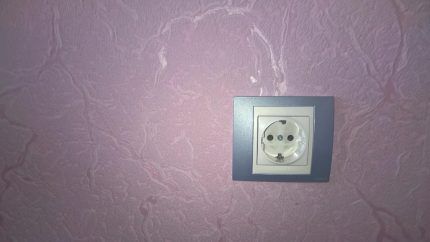
When installing a simple household air conditioner in an ordinary apartment, few people think about the location of the outlet for the split system. The device is connected to the nearest 220V outlet through an adapter, with a wire extension, or directly (depending on the location of the power outlet point).
But such a connection is only suitable for non-inverter models with a performance of less than 4 kW. Also, if a certain phase orientation is observed, low-power devices can be connected using this method. inverter-type climate systems.
It is best to install a new outlet for the air conditioner. Even if the existing outlet can perfectly cope with the load from an electrical appliance, hanging wires will look unaesthetic, although apartments do not have network outlet points under the ceiling.
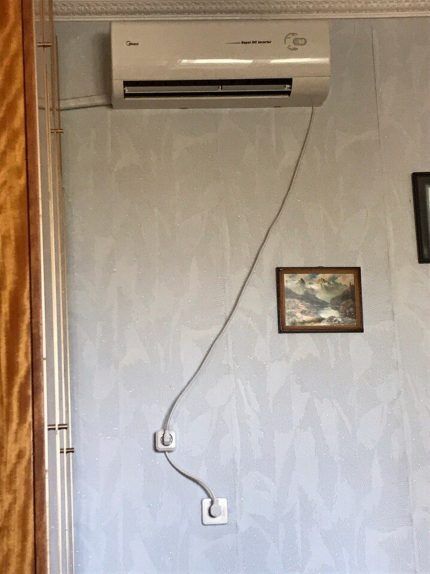
When designing and installing climate control equipment, it is worth “hiding” the outlet between the air conditioner housing and the nearest wall so that it looks as harmonious as possible.
If this is not possible, it can be installed under or to the side of the device (not on the side of an adjacent wall). There is no need to mount the socket above the equipment, because in this case you will have to hang the air conditioner slightly lower.
General rules when choosing a location for an outlet
When choosing a location for installing an individual outlet, you need to take into account the power of the climate control equipment, the location of other technical devices in the room, the thickness of the electrical wiring section and the specific layout of the room.
Appliances and furniture should not become an obstacle to connecting a household air conditioner to an outlet. Also, you should not place plants and flowers in front of the socket, because they have to be watered frequently, and therefore there is a risk of accidental water spillage and getting into the socket.
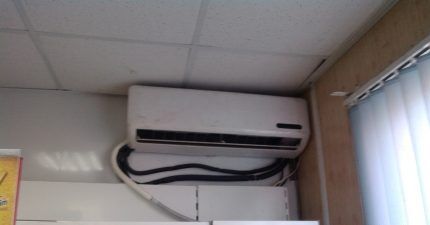
It is prohibited to install the socket near gas pipelines. Ideally, the distance between gas pipes and the electrical outlet should be at least half a meter.
In addition to these parameters, other factors need to be taken into account:
- the total load on the selected power line, taking into account all connected electrical appliances;
- the ability to change the cable layout;
- the presence of an overload circuit breaker in the house, etc.
The air conditioner cord most often has a length of up to a meter, so the socket must be installed as close to the device as possible (ideally, it should be located at the level of installation of the device body). Otherwise, you will have to pull extension cords across the entire room, which can negatively affect the interior.
In addition, extension cords and adapters are unnecessary connections and additional contacts, so manufacturers of climate control equipment recommend avoiding such multi-stage connections.
Because of this, the distance from the ceiling to the electrical outlet usually does not exceed 30 cm, since the air conditioner itself is mounted high under the ceiling. In this case, the distance between the outlet and the ceiling should not be less than 15 cm.
But there are exceptions to any rule. For example, if a very wide molding (ceiling plinth) is installed in the room, then the socket will have to be lowered lower from the ceiling.

If the outlet cannot be installed under the ceiling, and it is mounted at the bottom of the wall, then installing it too low is also not worth it. The ease of use of the room depends on the height at which the air conditioner outlet is located from the floor.
Experts advise doing it at a height of 10-15 cm, because then when washing the floor, water will not get into the connector. But in most cases, sockets in the apartment are located much higher.
According to the European standard, they are installed at a height of 30 cm from the floor, and according to the Russian standard (it remains from Soviet times) - 90 cm. The distance between the socket and the window slope should be at least 10 cm, and between the socket and the nearest wall should be be at least 20 cm.
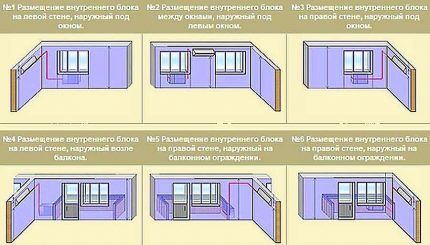
All grounded metal elements (batteries, heating pipes, water pipes, etc.) must be located at least 50 cm from the electrical outlet. Also, the electrical wire is additionally protected from heating pipes with insulation.
Industrial models with high power are connected directly to the distribution board. For this purpose, an additional cable is laid in the room. Also, the outdoor unit of split systems is connected directly to the electrical panel. The indoor unit cord can be connected to a regular indoor outlet.
Having a separate line and a separate circuit breaker when connecting climate control equipment has a number of advantages:
- If the air conditioner breaks down and there is a short circuit on the line, other electrical appliances will operate in standard mode.
- If there is a separate line, you can install an air conditioner of any power without calculating the total load on the wiring.
- The presence of a separate line makes it possible to install additional differential protection and EMS. This is true if the outdoor unit of the air conditioner is accessible to touch.
Regardless of the installation location of the air conditioning outlet, it must have grounding or differentiated relay. Grounding is an artificially created contact between an electrical device and the ground, due to which the voltage of the electrical installation is reduced.
Lack of grounding can lead to a potential on the housing and on all metal parts of the air conditioner of half the phase voltage due to the presence of a power filter. Manufacturers of any climate control equipment indicate in the passport the presence of mandatory grounding, so it should not be neglected.
Also, all electrical wires extending from the outlet must match the load. It is best to choose reliable copper three-core wires of white, blue and yellow-green colors (phase, neutral and ground), since aluminum has a lower electrical conductivity. If the outlet has aluminum wires, it is better to replace them with copper ones.
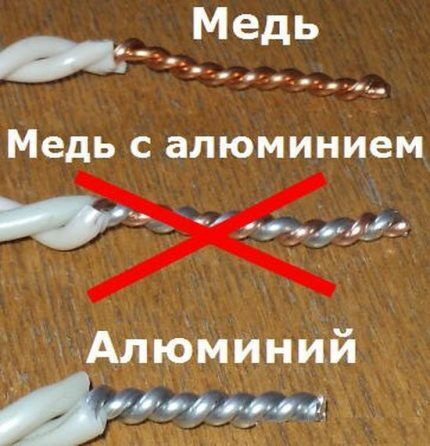
It is best to take wires with a cross section of about 2.5 mm2. If the cross-section of the wires is too small, they will not withstand the load.
Connecting the air conditioner to the network
Before connecting the split system to the electrical network, you should familiarize yourself with the diagrams and specifications for the device components and analyze the composition of the walls. Then you need to inspect the existing power supply system, measure the cross-section of the incoming cables and test the selected route with a special detector.
There are several ways to connect an air conditioner to the electrical network. If the wiring line for a powerful electrical appliance was not provided in advance, you will have to lay networks and install sockets after a major overhaul.
It is most convenient to connect the outlet in the distribution box of the room. But this becomes possible only if the electrical wiring running from this box to the electrical panel of an apartment or private house can withstand the maximum possible load of all connected electrical appliances.
Another method involves laying new electrical wiring lines. In this case, you need to groove the wall, lay a new cable in a plastic corrugated pipe and connect it to the junction box.If the depth of the groove is more than 2 cm, the cable can be hidden in the wall without a corrugated pipe.
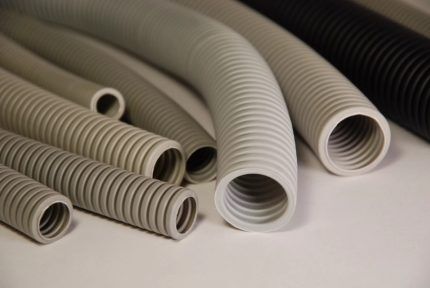
The groove can run horizontally or vertically, but it cannot be located diagonally. This is contrary to basic building regulations.
Based on the line arrangement project, it is possible to determine in advance the locations of the electrical network, incl. and for climate control equipment. If it is not possible to groove the wall, the electrical wiring can be laid openly.
In this case, the wires are hidden in a special plastic cable channel, which is fixed to the wall with screws. This method is the least labor-intensive and expensive, but the plastic channel can disrupt the appearance of the room.

If none of these methods work, you can connect the device via a cable to an outlet that powers equipment with less power. In this case, the cable stretches from the socket next to the air conditioner to the very point of power supply. But you need to check the capabilities of the outlet. If the network cannot cope with the load, the wires will burn out.
Connecting the split system to the power supply using a plug and a previously installed socket is the easiest way. This does not require any electrical work, so anyone can make this connection.
This installation option is chosen for:
- low power split systems (up to 4 kW);
- air conditioners built into the window;
- air conditioners that were installed in the room for a short time.
But it’s better to work out the location of climate control equipment and sockets for it in advance. This will allow you to lay more reliable wires to those outlets from which the air conditioner will be powered in the future.
How to hide a split system outlet?
Air conditioner sockets are usually in plain sight. They do not need to be crowded with furniture or appliances, but sometimes they can disrupt the overall design concept of the entire room.
This applies even to modern flat sockets, which only protrude slightly on the wall, to say nothing of the usual “pot-bellied” models. In this case, designers resort to small tricks and disguise sockets in the most unusual ways.

For example, the socket is mounted in a shelf on which the climate control equipment is located, hidden in a three-dimensional picture next to the air conditioner, or manufactured in the form of a block, extending out of the wall when pressed. The latter option is suitable if the air conditioner will only occasionally be connected to the power supply.
Also today, sockets with covers (hinged and retractable) are produced. These covers can be further decorated, painted in a bright color, or made as inconspicuous as possible.
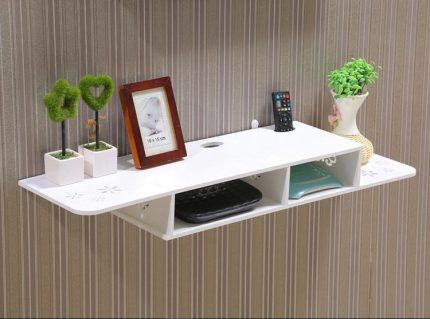
If there is a cabinet next to the air conditioner, then the socket can be hidden in it and arranged in the form of a retractable block (top, bottom or side).It can also be covered with a false panel or cornice.
If the climate control equipment has a cord that is too long, then it, together with the socket, can be disguised using a non-standard volumetric block of plasterboard, made in the same interior style.
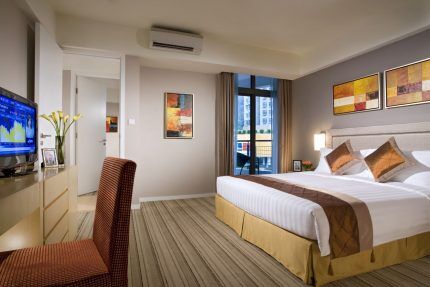
Also today there are other ways to disguise sockets. They can be locked in a small cabinet with sliding doors or hung with a folding mirror. If the interior style allows, the connector can be placed behind a small decorative door. This solution will look interesting in interiors in country style, Provence, chalet, etc.
The rosette can be covered with artificial flowers. In the bedroom or living room, you can use a print, stained glass panel or pattern to disguise the connector so that it looks like part of the design composition.
In a children's room, an electrical outlet can be hidden behind a retractable multi-colored panel, an interactive map or some three-dimensional models. For example, if your child is into Star Wars, you can hide the connector behind a plastic model of the Death Star or Millennium Falcon.
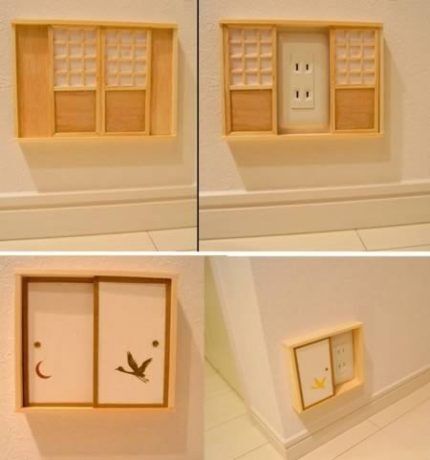
Typically, air conditioner sockets are hidden in the same way as sockets for other household appliances in the room. The choice of one or another method of camouflage depends on the design features of the room. But today, some architects propose not to hide sockets and wiring to the air conditioner, but to make them as open as possible.
Moreover, the design concept involves using wires of contrasting colors (for example, on a white wall, attach black wires almost in the central part of the wall). If the air conditioner wiring is open, then there will be no point in installing a hidden socket, and this detail can be made bright.
When can't an air conditioner be plugged into a power outlet?
Climate control equipment can be connected to the household network both in an apartment and in a country house, but for this certain conditions must be met. Otherwise, there is a risk of an emergency.
Thus, it is prohibited to connect air conditioners to a power outlet if:
- no good grounding;
- the electrical wiring is in poor condition (for example, the room has only old-style aluminum wiring, which will not be able to withstand the load from the air conditioner);
- there are no devices that equalize voltage drops (this is especially dangerous in houses with wooden floors);
- the cable has insufficient cross-section for connection, etc.
Climate control equipment requires proper electrical wiring. It is sensitive to voltage changes and may become unusable if there are any problems on the power line.
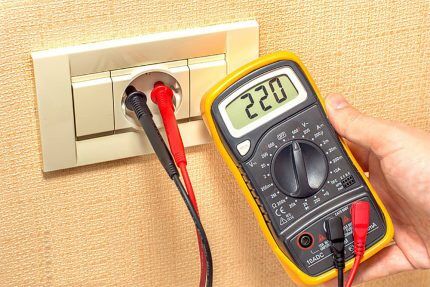
You can check the functionality of the outlet at home. To do this, you just need to buy a tester and read its instructions.
Conclusions and useful video on the topic
Since installing an air conditioner and sockets for it takes a lot of time and effort, the issues of its power supply must be taken as seriously as possible.Before installation, you should take the advice of electricians and designers.
Some recommendations for installing sockets in an apartment are given in the video below:
If possible, you should design the location of an individual outlet and lay a separate power line to ensure uninterrupted operation of the climate control equipment. This can be done both at the stage of major renovation of the premises, and during the installation of an air conditioner in an already renovated room.
Tell us where and how you placed the electrical outlet for the air conditioner in your apartment/office/house. Share the nuances of the location known only to you. Please leave comments, ask questions, post photos in the block form below.



